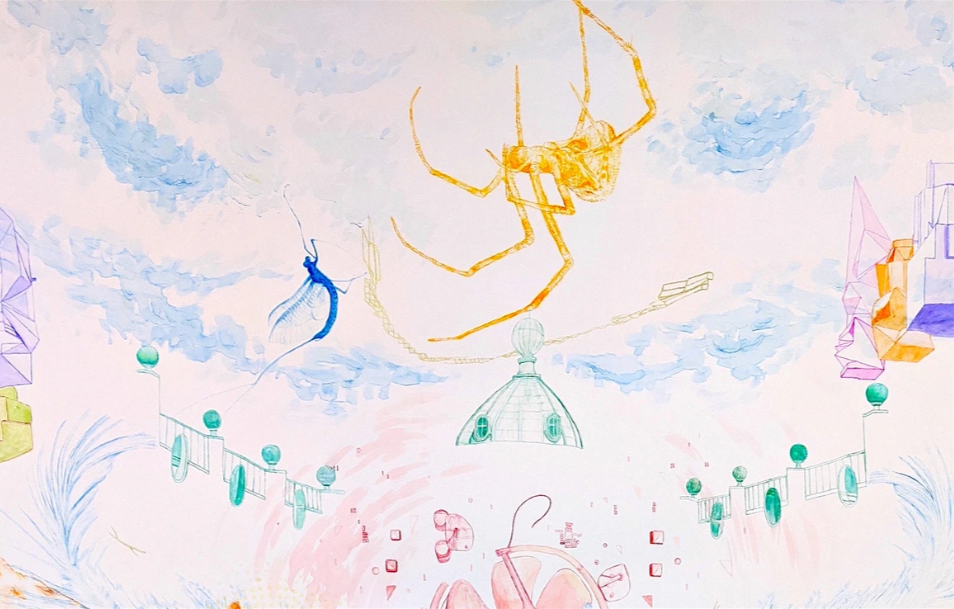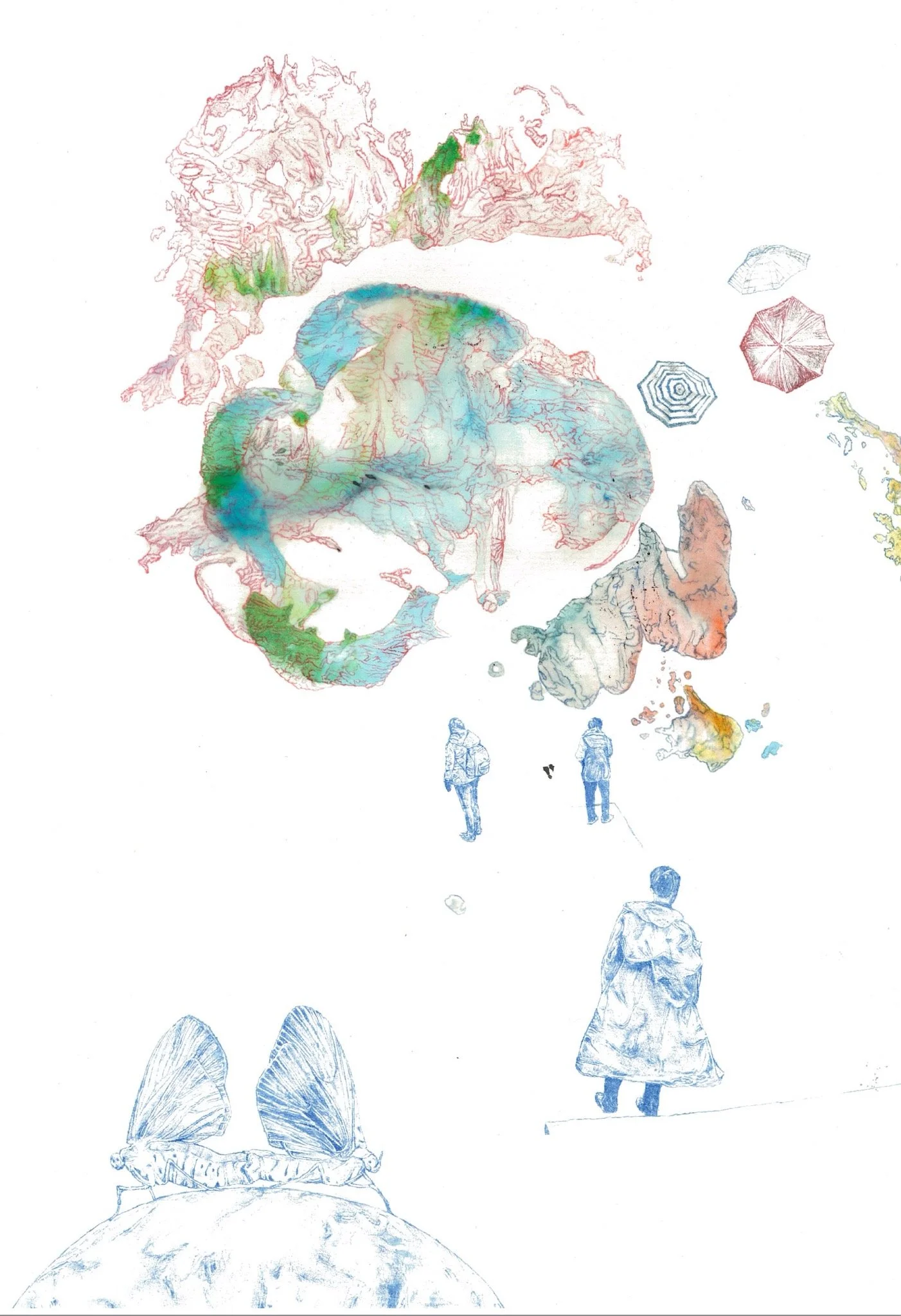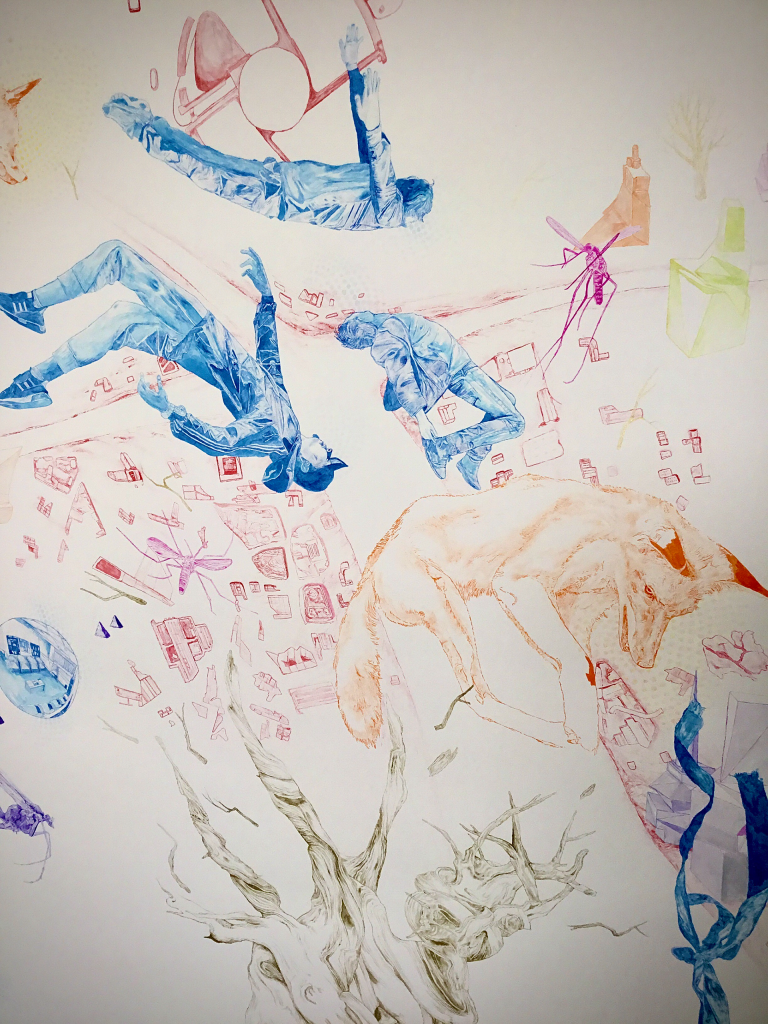
Gareth Bunting
Bunting’s work is a visual diary, capturing existential ‘landscape portraits’ that offer glimpses into specific memories within a given space. His deeply personal narratives attempt to depict the collective unconscious of humanity and the hyper-real world we inhabit.
Through his works, Bunting explores a range of pressing issues – from mental health and wealth inequality to broader social, political, and environmental concerns. He is intrigued by how experiences and places exist in our minds, and his signature style of intricate ink drawing helps him to create sprawling, fantastical landscapes that feel almost dreamlike. Bunting blends together the fractal geometry of nature with the mechanical and the manufactured to convey our current state – both seemingly at odds with nature and, at the same time, an integral part of it.
The impact of modern technology on the self and society fascinates him, and his compositions blend the virtual with the real. He delves into the fallibility of memory, playing with contemporary and historical symbolism to create compositions that are as thought-provoking as they are visually stunning. Ultimately, Bunting’s art serves as a powerful reminder that our experiences, memories, and perceptions are all deeply intertwined, and that we are all part of something greater than ourselves.
SELECTED EXHIBITIONS:
At The Cross-Junction. Solo show at PAPER II Manchester 2020 | Selected for the contemporary young artist award. Biscuit factory Newcastle 2020 | Artist in residence at Bon Volks Margate 2019 | Artist in residence at Artcore Derby 2019
EDUCATION:
MA Fine Art, Sheffield Hallam University 2014
Gareth Bunting lives and works in the west midlands, UK.
“ I am always in pursuit of some kind of discovery, I like the idea of an old-fashioned artist using drawing to learn about anatomy, or the solar system, or as a tool to communicate important ideas to the masses. I work like an abstract painter, and mix paint, inks and occasionally different chemicals together, to investigate the world of fractal patterns, their relationships with everything, and their way of connecting everything together at all scales. I draw into them, and find that I am almost learning a visual language. I combine this chaos with a lot of order, and carefully draw narrative landscapes from memory which investigate spaces and places, political and environmental issues, as well as pondering my own existence and its place in the world, I see my works as landscape portraits which document their time. I also find that working digitally, writing, travelling, making music and whatever else I do all somehow combines and builds up my practice as a whole.”
Interview:



